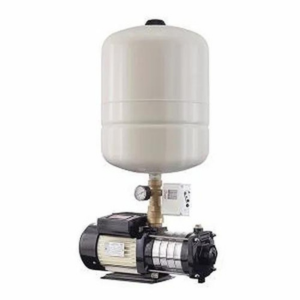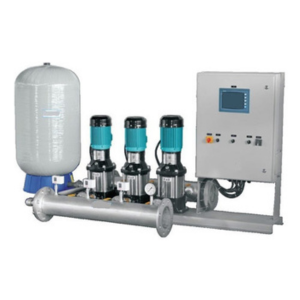
Water Pressure Booster Pumps for Homes
Are you experiencing low water pressure in your homes? We provide best pressure water pressure booster pump cost effectively and energy efficient.
Water Pressure Booster Pumps for Homes
Are you experiencing low water pressure in your homes? We provide best pressure water pressure booster pump cost effectively and energy efficient.
Water Pressure Booster Pump For Homes
Multi-Stage Pressure Booster Pump
Centrifugal Pressure Booster Pump
Centrifugal Pressure Booster Pump
Centrifugal pressure booster pumps utilize a spinning impeller to increase water pressure. These versatile pumps are commonly used for general water supply and irrigation applications.
Working Principle:
As the impeller rotates, it imparts kinetic energy to the water, which is then converted into pressure energy as it exits the pump.
Specifications Table:
| Parameter | Specification |
| Flow Rate | Varies based on mode |
| Pressure Increase | Depends on impeller design |
| Application | General water supply, irrigation |
| Power Source | Electric motor |
| Efficiency | Moderate to high |
| Maintenance | Relatively low |
Multi-Stage Pressure Booster Pump
Multi-Stage Pressure Booster Pump
Multi-stage pressure booster pumps have multiple impellers arranged in series to achieve higher pressure levels. They are often used in high-rise buildings and industrial systems.
Working Principle:
Water passes through each impeller stage, gaining additional pressure before exiting the pump. This staged approach results in significant pressure boosts.
Specifications:
| Parameter | Specification |
| Flow Rate | Varies based on mode |
| Pressure Increase | High, with multiple stages |
| Application | High-rise buildings, industrial systems |
| Power Source | Electric motor |
| Efficiency | High |
| Maintenance | Periodic inspection and maintenance |
How to Select Best Pressure Booster Pump for Home
1. Determine Your Water Pressure Needs
-
- Current Water Pressure: Measure your existing water pressure. This can be done using a pressure gauge attached to a hose bib.
- Desired Water Pressure: Determine the ideal water pressure you want to achieve. Household water pressure is typically between 40-60 psi.
2. Flow Rate Requirements
-
- Calculate Flow Rate: Determine the total flow rate required by adding up the flow rates of all fixtures that may be used simultaneously (e.g., showers, faucets, washing machines).
- Pump Capacity: Ensure the booster pump can handle the combined flow rate. Flow rates are usually measured in gallons per minute (GPM).
3. Pump Type
Single Stage vs. Multi-Stage: Single-stage pumps are suitable for small to medium-sized homes, while multi-stage pumps provide higher pressure and are better for larger homes or multi-story buildings.
4. Pump Features
-
- Automatic Pressure Switch: An automatic pressure switch can turn the pump on and off based on water demand, enhancing convenience and energy efficiency.
- Variable Speed Pump: These pumps can adjust their speed based on demand, providing consistent pressure and saving energy.
- Noise Level: Consider the noise level of the pump, especially if it will be installed near living areas.
5. Power Source
-
- Electric vs. Non-Electric: Most booster pumps are electric, but if you are in an area with unreliable electricity, consider a non-electric option.
- Voltage: Ensure the pump matches the electrical supply available in your home (e.g., 110V, 220V).
6. Installation Location
-
- Indoor vs. Outdoor: Decide where the pump will be installed. Some pumps are designed for indoor use only, while others can withstand outdoor conditions.
- Space Requirements: Ensure there is enough space for installation and maintenance.
7. Brand and Warranty
-
- Reputable Brands: Choose a pump from a reputable brand known for reliability and good customer support.
- Warranty: Check the warranty period and what it covers to ensure long-term protection.
8. Budget
Cost vs. Features: Balance your budget with the features and quality you need. Sometimes spending a bit more initially can save money on maintenance and energy costs in the long run.
9. Professional Advice
Consult a Professional: If unsure, consult a plumber or water system professional to get recommendations based on your specific situation.
Example Products
Here are a few examples of popular pressure booster pumps for home use:
1.Ebara TPX 2-4
-
- Flow Rate: Up to 15 GPM
- Pressure: Boosts up to 45 psi
- Features: Built-in pressure tank, low noise, compact design
2.Ebara TPX 4-4
-
- Flow Rate: Up to 20 GPM
- Pressure: Boosts up to 50 psi
- Features: Stainless steel construction, corrosion-resistant, built-in pressure controller
3.Ebara TPX 4-8
-
- Flow Rate: Up to 1.2 GPM
- Pressure: Boosts up to 80 psi
- Features: Ideal for RO systems, quiet operation, compact size
By considering these factors and options, you can select the best pressure booster pump to meet your home’s water pressure needs effectively.
FAQ
How to boost water pressure in home?
A quick and easy way to increase water pressure is to adjust the pressure-reducing valve, which can be found in your home, usually close to your water meter. If your pressure gauge reading was low, make slight adjustments to your regulator.
Where can I use a pressure booster pump?
Pressure booster pumps are used in various applications, including residential homes, commercial buildings, industrial facilities, and agricultural settings. They are particularly useful in areas with low or fluctuating water pressure.
Which pump gives highest pressure?
There are many different types of hydraulic pumps, but the one that is most commonly used for high pressure applications is the centrifugal pump. This type of pump relies on a rotating disc to move fluid through the system, which creates high pressure and makes it possible to apply force quickly and efficiently
Are there different types of pressure booster pumps?
Yes, there are several types of pressure booster pumps, including centrifugal pumps, multi-stage pumps, variable speed pumps, jet pumps, diaphragm pumps, submersible pumps, in-line pumps, and constant speed pumps. Each type is suited to specific applications and requirements.


